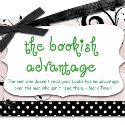This summer I designed and ran a workshop focusing on nonfiction comprehension. The Directed Reading Thinking Activity (DRTA) is one of the strategies I taught within the workshop. Below, you’ll find the explanation I shared. In researching this method, I used the following resources:
Reading Rockets (an article about DRTA)Instructional Reading Strategy: DR-TA (Directed Reading-Thinking Activity) Directed Reading Thinking Activity What is it?
DRTA is a comprehension strategy that guides students in asking questions about a text, making predictions, and then reading to confirm or refute their predictions. The DRTA process encourages students to be active and thoughtful readers, which enhances their comprehension. The DRTA model actually consists of three parts: D – Direct, R – Read, and T – Think. The process of those three combine to make the A – Activity. This strategy could actually work with either fiction or nonfiction texts, but for today’s purposes, we’ll be focusing on the nonfiction. The process is the same for either type of text, but the questions you ask will be different.
How do I use it?
There are six simple steps to follow when you’re planning the DRTA process.
1.
Choose a text. First, read the text you’ve chosen and mark specific places for your students to pause during the reading process.
2.
Activate prior knowledge. Begin this step by introducing the text or the topic to the students. Then, have them brainstorm a list of ideas that come to mind in relation to the title or topic. While they throw out ideas, you should record them on chart paper, the chalk board, or the overhead. This step is important because students will be making predictions about what they will read about in the text. Activating their prior knowledge on the topic will allow them to make predictions about what might be included in the text.
3.
Have students make predictions about what they will read. Guide them to use all of the clues they have available to them including: the index, the table of contents, pictures, charts, tables, the cover, etc. When students make their predictions, ask them to explain how they came up with their predictions. Don’t accept “I don’t know” as a response.
4.
Have students read a section of the text. Before the students start reading, point out the predetermined stopping points, which should lend themselves to making predictions. In expository texts, good stopping points are often right after a new heading or subheading in the text.
Reading the text can be done in a variety of ways. You can have volunteers read aloud, you can have students read silently to themselves, partner read, or even read aloud for you in a small guided reading situation. If the students are reading silently, it is especially important that you indicate where they should stop reading.
5.
At each stopping point, have students confirm or revise their prior predictions, and make new predictions. During this process, encourage them to explain what in the text is causing them to confirm and/or revise prior predictions, and what is causing them to make the new predictions they are making. You can also discuss different possible predictions, since it is very likely that your students will have different ideas.
6.
Continue steps 4 and 5 until the selection is finished.
Why should I use it?
DRTA encourages students to be active and thoughtful readers. It activates students' prior knowledge and encourages them to connect new learning to that prior knowledge. DRTA teaches students to make predictions and to monitor their understanding of the text as they're reading - all of which helps strengthen the students’ reading and critical thinking skills.
 After you read and write, you tape the triangle together to create the finished product.
After you read and write, you tape the triangle together to create the finished product. 
 After you read and write, you tape the triangle together to create the finished product.
After you read and write, you tape the triangle together to create the finished product. 













